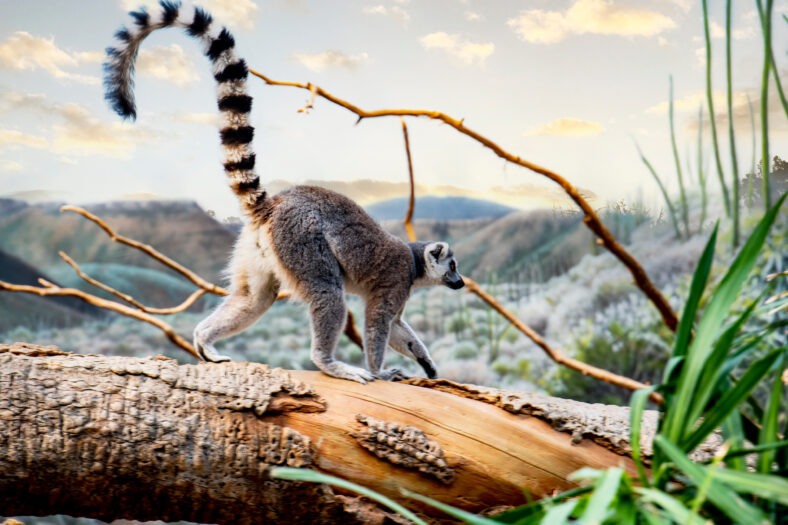Lemurs Are In Danger Of Going Extinct, Despite Being So Genetically Diverse

The evolution of lemurs is considered to be unique because they evolved entirely in isolation on the island of Madagascar millions of years ago.
The island contained diverse ecosystems, including wet tropical forests in the east and dry, arid lands in the southwest.
This led to many forms of lemurs that ranged from tiny mouse-like ones to giant sloth ones. The lemurs that we know today are small with big eyes and live in trees.
More than 100 species live in Madagascar, and they all have high levels of genetic diversity. Yet, 90 percent of them are at risk of extinction.
A team of scientists from Spain wanted to find out why so many lemur species are critically endangered despite being so genetically diverse. So, they sequenced the genomes of 162 lemurs from 50 different species across Madagascar.
Their study revealed how ecological factors, climatic shifts, and recent human activity have affected lemurs’ genetic diversity over time.
“As climatic shifts periodically connected once-isolated habitats, lemurs from different species and populations would interbreed, sharing genetic material that boosted their overall diversity,” said Joseph Orkin, the lead author of the study.
“On top of that, the most diverse species appear to be the ones with fragmented populations in multiple ecosystems across the island. This pattern of isolation and reconnection seems to be building up and redistributing genetic variation across the island.”
Recent human activity has also played a major role in collapsing lemur populations. The data showed that deforestation, human population expansion, and shifts in hunting practices were directly correlated to the start of severe declines in lemur populations.

Sign up for Chip Chick’s newsletter and get stories like this delivered to your inbox.
It is unknown when the first humans arrived in Madagascar, but their numbers began to grow about 1,000 years ago. By the 1700s, the island’s landscape had already experienced significant changes.
“When we looked at the genetic evidence for population declines, we kept seeing these two consistent inflection points around 1,000 and 300 years ago. It was really striking to see such a clear overlap between the timing of human population expansion and the decline of lemur populations,” said Orkin.
These findings could be crucial to shaping future conservation efforts. Habitat reduction and deforestation threaten lemurs by diminishing their population sizes and severing the natural connections between habitats that allowed for gene flow.
Without diverse genetic interactions, inbreeding becomes more likely to occur, which puts already vulnerable species at greater risk.
Madagascar is not the only place in the world where the loss of biodiversity can be seen. The expansion of the human population is causing this to happen all over the globe. If we become more aware of how human activity shapes biodiversity, we can learn how to better protect it.
The details of the study were published in the journal Nature Ecology & Evolution.
More About:Animals





